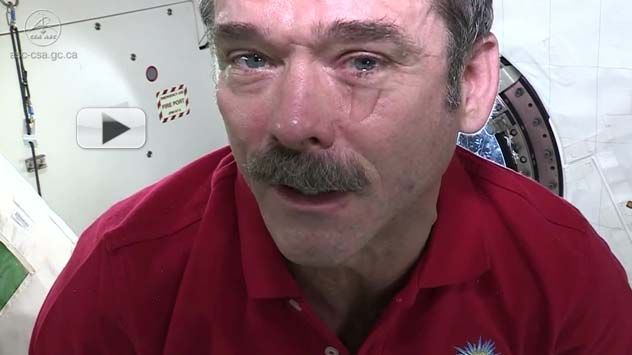Astronauts can t cry the same in space as they do on earth their eyes make tears but they stick as a liquid ball

Astronauts Can’t Cry the Same in Space as They Do on Earth

Space, the final frontier, has always intrigued us with its mysteries and endless possibilities. Astronauts brave the unknown, leaving the comforts of Earth behind to explore the vastness of the cosmos. However, life in space comes with its unique set of challenges and adjustments, including the inability to shed tears like they do on our home planet.

Your eyes are essential for vision, but they also have another crucial function - producing tears. Tears not only help keep our eyes healthy and lubricated, but they are also an emotional outlet, expressing our joy, sadness, and everything in between. But in the microgravity environment of space, the phenomenon of crying changes.
NASA astronaut Don Pettit, who spent extended periods aboard the International Space Station (ISS), described the sensation of crying in space as more of a “prelude to crying.” Astronauts can produce tears, but without gravity, they don’t fall from their eyes like they do on Earth. Instead, tears accumulate in small liquid balls that stick to the eye.
The absence of gravity alters the behavior of other bodily fluids as well. On Earth, tears naturally flow down our cheeks due to gravity. In space, however, tears remain in contact with the eyes, causing them to form a wet patch around the eye area. As a result, astronauts may experience discomfort and blurry vision until they manually wipe away the tears.
The reason behind tears forming into liquid balls in space is still not entirely understood. According to The Atlantic, this phenomenon could be due to the balance between the surface tension of the tears and the gas atoms in the cabin. Without gravity, tears do not distribute evenly across the eyes and instead clump together, forming spheres.
Living and working in an environment where crying takes on a different form highlights the remarkable adaptations that astronauts must undergo. It serves as a reminder that space exploration is not all glamorous and luxurious, but a constant test of human resilience and the boundaries of our understanding.
Understanding how tears behave in space has practical implications as well. Tears serve as an essential component of the eye’s defense system, helping wash away foreign particles and bacteria. Discovering how to simulate the effects of gravity on tears could contribute to the development of better eye-care products for use in microgravity environments.
In conclusion, space is a realm of wonder and adventure, but it also challenges us physically and emotionally. Astronauts, as the pioneers of space exploration, face a myriad of unique experiences, including the ability to cry. Their tears, although produced, do not behave in the same way as they do on Earth. This insight into the peculiarities of life in space reminds us of the ever-evolving nature of science and the marvels that lie beyond our home planet.
Source: Business Insider
Share
Related Posts
Quick Links
Legal Stuff

